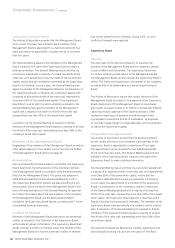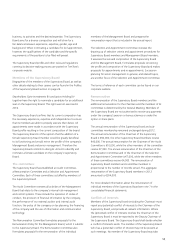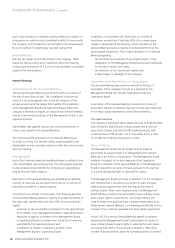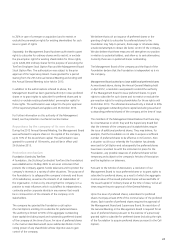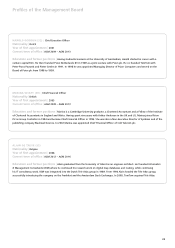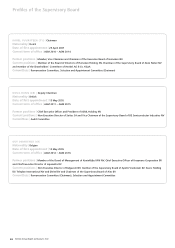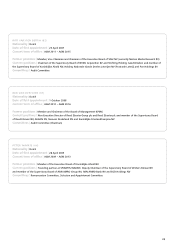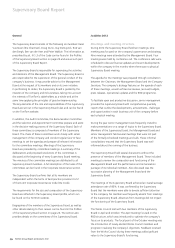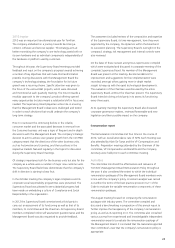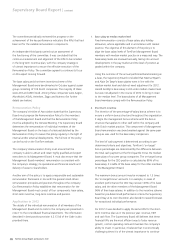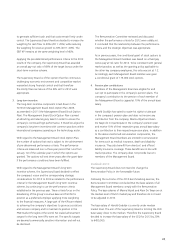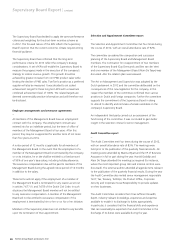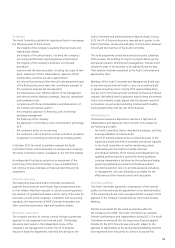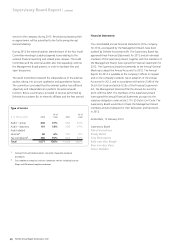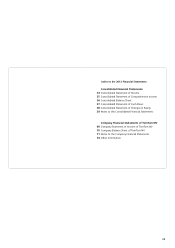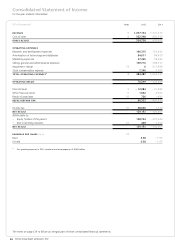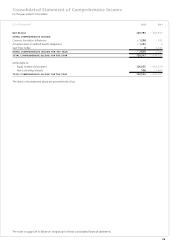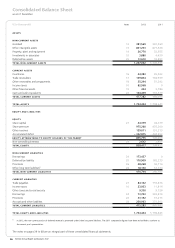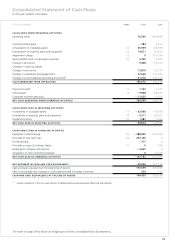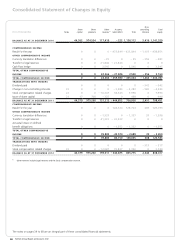TomTom 2012 Annual Report Download - page 30
Download and view the complete annual report
Please find page 30 of the 2012 TomTom annual report below. You can navigate through the pages in the report by either clicking on the pages listed below, or by using the keyword search tool below to find specific information within the annual report.TomTom Annual Report and Accounts 2012
28
Supervisory Board Report | continued
The committee periodically reviewed the progress on the
achievement of the key performance indicators (the KPIs) that had
been set for the variable remuneration components.
An independent third party carried out an assessment of
the functioning of the committee. It was concluded that the
continuous assessment and alignment of the KPIs to be included
in the long-term incentive plan, with the company strategy is
of utmost importance to ensure the effective execution of the
Remuneration Policy. The committee agreed to continue its focus
on this aspect moving forward.
The base salary and short term incentive scheme of the
Management Board were benchmarked in October against a peer
group consisting of 105 Dutch companies. The majority of these
were AEX and AMX listed. Among these companies were Aegon,
AkzoNobel, ASML, Heineken, Ziggo and Nutreco (for further
details see below).
Remuneration Policy
The company’s Articles of Association state that the Supervisory
Board must propose the Remuneration Policy for the members
of the Management Board and that the Remuneration Policy
must be adopted by the General Meeting. The Supervisory Board
determines the remuneration of individual members of the
Management Board on the basis of criteria established by the
Remuneration Policy. It reviews this policy regularly in the light of
internal and/or external developments. The full text of the policy
can be found on the TomTom website.
The company’s Remuneration Policy must ensure that the
company is able to attract and retain highly qualifi ed and expert
executives to its Management Board. It must also ensure that the
Management Board members’ remuneration is consistent with
the company’s strategy, its operational and fi nancial results and
delivery of value to shareholders.
Another aim of the policy is to apply a responsible and sustainable
remuneration framework in line with the general result-driven
remuneration principles and practices throughout the company.
Our Remuneration Policy establishes that remuneration for the
Management Board must consist of four components: base salary,
short-term incentive, long-term incentive and pension.
Application in 2012
The details of the individual remuneration of all members of the
Management Board and its costs to the company are presented in
note 7 to the consolidated fi nancial statements. The information
described in best practice provision II.2.13 (d) of the Code is also
provided there.
1. Base salary at median market level
Fixed remuneration consists of base salary plus holiday
allowance, where applicable and in accordance with market
practice. The objective of this element of the policy is to
align the base salary levels of TomTom Management Board
members with median market practice in a measured way. The
base salary levels are reviewed annually, taking into account
developments in the pay market and the level of position as
graded within the company.
Using the outcome of the annual performed benchmarking as
a base, the Supervisory Board concluded that Marina Wyatt’s
and Alain De Taeye’s base salaries were in line with the
median market level and did not need adjustment for 2012.
Harold Goddijn’s base salary is still under median market level
but was not adjusted in the course of 2012 to bring it closer
to the median level. The base salaries of all Management
Board members comply with the Remuneration Policy.
2. Short-term incentive
The intention of the percentage-of-salary bonus scheme is to
ensure a uniform bonus structure throughout the organisation.
It aligns the management bonus scheme with the bonus
structure that applies to other staff within the company and
with Dutch market practice. This component of Management
Board remuneration was benchmarked against the same peer
group as was used for the base salary comparison.
The level of cash payment is determined according to pre-
determined criteria and objectives. TomTom’s ‘on-target’
bonus percentages are determined by the difference between
the total cash payment at the third quartile minus the median
base salary of our peer group companies. The on-target bonus
percentage for the CEO position is calculated as 80% of his
base salary. It is 64% of the base salary for the other members
of the Management Board.
The maximum bonus amount may be increased to 1.5 times
the ‘on-target bonus’ amounts. For example, in cases of
excellent performance the CEO may receive 120% of his base
salary, and the other members of the Management Board
96% of their base salaries. In addition to the incentive scheme
based on pre-determined performance criteria the Supervisory
Board may at its own discretion also decide to reward bonuses
for exceptional individual performance.
For 2012 it was decided to apply the same KPIs for the short-
term incentive plan as in the previous year: revenue, EBIT
and cash fl ow. The Supervisory Board still believes that these
fi nancial KPIs are the most effi cient way to foster revenue
growth, control operating costs and maintain the company’s
ability to invest. In particular, it believes that in economically
challenging times it is of the utmost importance to continue


